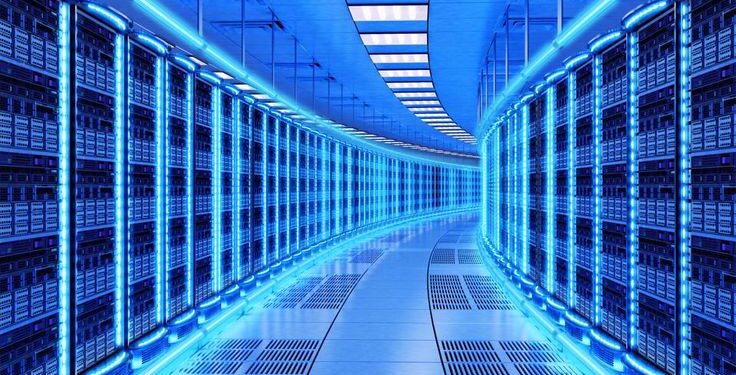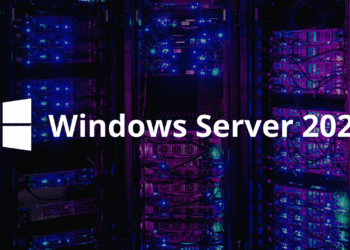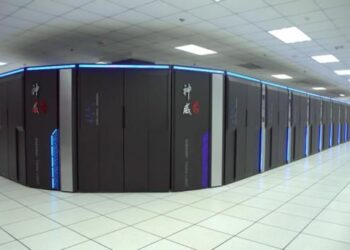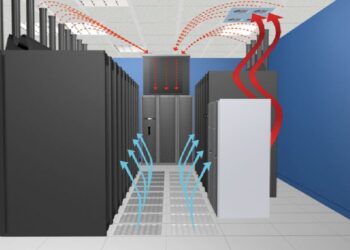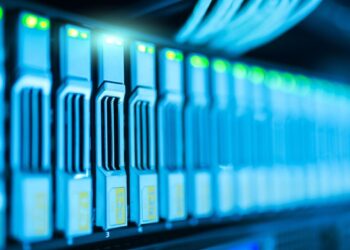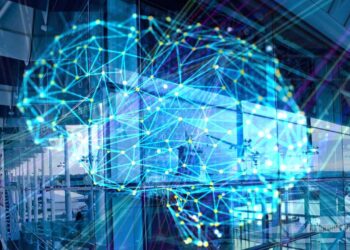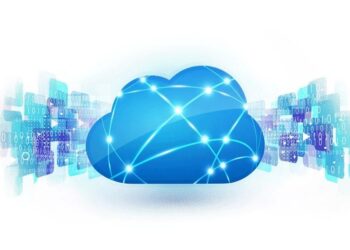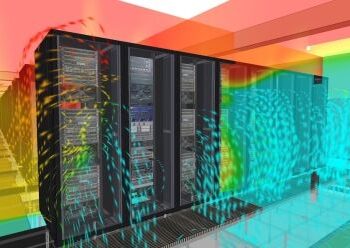In today’s digital era, data centers have evolved into the beating heart of global connectivity and information exchange. These sophisticated facilities power everything from cloud computing and social media to online banking and streaming services. As our reliance on digital infrastructure intensifies, the demand for efficient, sustainable, and technologically advanced data centers has never been greater. This article explores the myriad innovations driving efficiency in data centers, examines the technological breakthroughs that are reshaping the industry, and discusses the future trends poised to further revolutionize data center operations.
Data centers serve as the backbone of the modern digital economy. They house thousands of servers, storage systems, and networking devices that process and store vast amounts of data every second. With the exponential growth of digital information and the increasing need for real-time data processing, traditional data center models have been forced to adapt. Efficiency, sustainability, and scalability have become paramount in data center design and operation.
As energy consumption and environmental concerns escalate, the industry is witnessing a transformation driven by technological innovation. From revolutionary cooling techniques to cutting-edge automation and artificial intelligence (AI) systems, data centers are undergoing a renaissance aimed at minimizing energy use while maximizing performance and reliability.
The Role of Data Centers in the Digital Age
Data centers are more than just warehouses for servers; they are dynamic ecosystems that support our interconnected world. They enable:
A. Real-time Data Processing – Facilitating instantaneous data analysis and decision-making in sectors such as finance, healthcare, and transportation.
B. Cloud Computing – Hosting vast amounts of data and applications that power services ranging from email to enterprise resource planning.
C. Internet of Things (IoT) Connectivity – Managing the influx of data from billions of connected devices that rely on continuous network communication.
D. Artificial Intelligence (AI) and Machine Learning (ML) – Providing the computational power required for training complex algorithms that drive automation and predictive analytics.
The demands placed on data centers are continuously evolving, and to meet these challenges, operators are turning to innovative strategies and technologies designed to improve operational efficiency and reduce environmental impact.
Innovations Driving Data Center Efficiency
The quest for efficiency in data center operations has led to a variety of technological innovations. These advancements are not only optimizing energy consumption and reducing costs but also enhancing overall performance. Key innovations include:
Advanced Cooling Technologies
Cooling represents one of the most significant challenges in data center management, as servers generate enormous amounts of heat during operation. Traditional air-cooling methods are increasingly being supplemented or replaced by more advanced techniques, such as:
A. Liquid Cooling Systems:
Liquid cooling uses fluids with high thermal conductivity to absorb heat more effectively than air. By directly cooling the components, these systems reduce energy consumption and increase the lifespan of hardware.
B. Immersion Cooling:
In immersion cooling, servers are submerged in a thermally conductive liquid that efficiently dissipates heat. This method not only cuts energy costs but also reduces the need for bulky air conditioning systems.
C. Free Cooling Techniques:
Free cooling leverages naturally cool external air or water sources to reduce the temperature within data centers. By using ambient environmental conditions, data centers can significantly lower their reliance on traditional HVAC systems.
These innovations not only enhance thermal management but also contribute to a lower carbon footprint by decreasing the overall energy consumption of the facility.
Energy Management and Renewable Integration
Energy efficiency is a critical component of modern data center design. As power demands escalate, data centers are adopting a variety of strategies to optimize energy use and integrate renewable energy sources:
A. Renewable Energy Integration:
Many data centers are now being powered by renewable sources such as solar, wind, and hydroelectric power. This shift not only reduces dependency on fossil fuels but also enhances the sustainability profile of the operation.
B. Smart Energy Management Systems:
These systems employ real-time monitoring and advanced analytics to balance power loads, optimize resource allocation, and reduce wastage. They enable data center operators to forecast energy demands accurately and adjust operations accordingly.
C. Battery Storage Solutions:
Incorporating advanced battery storage allows data centers to store excess renewable energy and deploy it during peak usage times. This ensures a continuous power supply and mitigates the effects of energy price fluctuations.
By embracing renewable energy and sophisticated energy management tools, data centers can achieve significant cost savings and contribute to global sustainability efforts.
Automation and Artificial Intelligence
The integration of automation and AI is revolutionizing data center operations. These technologies enable more efficient management, improved reliability, and proactive maintenance strategies:
A. Predictive Maintenance:
AI-driven monitoring systems analyze data from various sensors and equipment, predicting potential failures before they occur. This proactive approach minimizes downtime and extends the lifespan of critical components.
B. Automated Resource Allocation:
Machine learning algorithms can dynamically allocate resources based on current demand, ensuring optimal performance while minimizing energy consumption.
C. Enhanced Security and Monitoring:
AI systems continuously scan networks for irregular activity, identifying potential security threats in real time. This constant vigilance ensures data integrity and reduces the risk of cyberattacks.
Automation not only streamlines operations but also empowers data centers to adapt rapidly to changing conditions, thereby enhancing overall efficiency and reliability.
Modular Design and Scalability
The modular approach to data center design allows for greater flexibility and scalability. This design philosophy is crucial in accommodating the rapid growth of data volumes and evolving technological demands:
A. Scalable Infrastructure:
Modular designs enable data centers to expand seamlessly by adding new modules as demand increases. This flexibility ensures that facilities can grow without significant downtime or operational disruption.
B. Cost Efficiency:
By building data centers in a modular fashion, operators can reduce capital expenditure and minimize the risk associated with large-scale construction projects.
C. Enhanced Maintenance:
Modular components can be easily replaced or upgraded without affecting the overall operation, ensuring continuous service availability.
This innovative design strategy is instrumental in maintaining high levels of performance while keeping operational costs in check.
The Emergence of Edge Computing
As the volume of data generated by IoT devices and other sources continues to soar, edge computing has emerged as a viable solution to reduce latency and enhance performance. Edge computing involves processing data closer to the source rather than relying solely on centralized data centers.
A. Reduced Latency:
By processing data locally, edge computing minimizes the delays associated with data transmission, thereby improving response times for critical applications.
B. Bandwidth Optimization:
Localized processing helps reduce the load on centralized data centers and network infrastructures, resulting in more efficient use of available bandwidth.
C. Enhanced Data Security:
With sensitive data being processed locally, the risks associated with long-distance data transfers are minimized, bolstering overall security.
Edge computing complements traditional data center operations by offloading processing tasks, thereby enhancing overall system efficiency and user experience.
Sustainability and Environmental Impact
The push towards greater efficiency in data centers is driven not only by economic factors but also by an urgent need to reduce the environmental impact of rapidly expanding digital infrastructures. Data centers account for a significant share of global energy consumption, making sustainability a critical priority.
Green Initiatives and Environmental Stewardship
Data center operators are adopting numerous green initiatives to reduce their carbon footprint and promote environmental stewardship:
A. Eco-friendly Construction Materials:
Using sustainable and recyclable materials during construction helps reduce environmental impact and enhances the long-term sustainability of the facility.
B. Innovative Cooling Solutions:
Advanced cooling methods, such as free cooling and liquid immersion, significantly reduce energy usage and greenhouse gas emissions.
C. Carbon Offsetting Programs:
Many companies are investing in carbon offsetting initiatives, such as reforestation projects, to compensate for the emissions generated by their data centers.
D. Energy-Efficient Hardware:
The adoption of energy-efficient servers, storage systems, and networking equipment plays a crucial role in lowering overall power consumption.
These measures not only support global efforts to combat climate change but also position data centers as leaders in corporate sustainability.
Regulatory Compliance and Industry Standards
As environmental concerns continue to grow, governments and regulatory bodies worldwide are imposing stricter standards on energy usage and emissions. Data centers are increasingly required to comply with these regulations, which drive further innovation and efficiency improvements:
A. Energy Star Ratings:
Data centers are encouraged to pursue Energy Star ratings by adhering to best practices in energy management and system design.
B. Green Building Certifications:
Certifications such as LEED (Leadership in Energy and Environmental Design) recognize data centers that meet rigorous standards for sustainability and energy efficiency.
C. Industry Collaboration:
The data center industry is collaborating with research institutions and environmental agencies to develop innovative solutions that reduce energy consumption and environmental impact.
Adhering to these standards not only enhances operational efficiency but also builds consumer trust and enhances the reputation of data center operators.
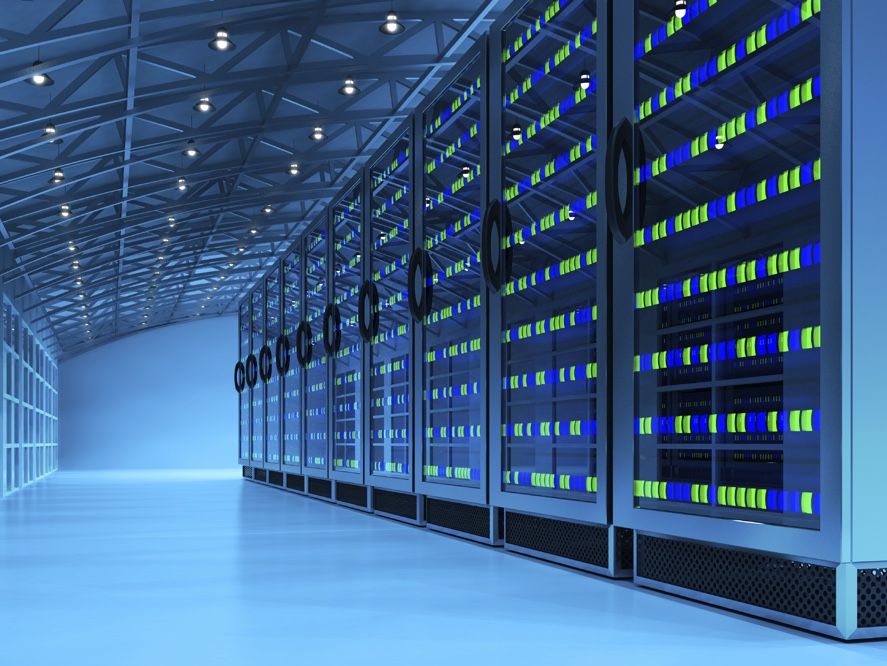
The Economic Impact of Data Center Innovations
Investing in data center innovations goes far beyond technological improvements; it has a significant economic impact. Enhanced efficiency leads to reduced operational costs, which in turn can translate into lower service prices, increased competitiveness, and higher profit margins.
Cost Reduction Strategies
By integrating new technologies and optimizing operational processes, data centers can achieve significant cost reductions:
A. Lower Energy Bills:
Advanced cooling and energy management systems directly reduce energy consumption, resulting in substantial savings on utility bills.
B. Reduced Maintenance Costs:
Predictive maintenance and automated monitoring systems help identify issues before they escalate, minimizing expensive emergency repairs and downtime.
C. Improved Asset Utilization:
Dynamic resource allocation and modular design ensure that every piece of hardware is used optimally, maximizing the return on investment.
D. Scalability:
Modular and scalable designs allow data centers to expand gradually, avoiding large upfront capital expenditures while adapting to market demands.
These strategies not only drive down operational costs but also foster an environment where innovation can thrive, benefiting both operators and end users.
Boosting Business Competitiveness
In a highly competitive digital marketplace, efficiency is a key differentiator. Data center innovations offer several competitive advantages:
A. Enhanced Performance:
Faster processing speeds and improved reliability lead to better overall service quality, which can attract new customers and retain existing ones.
B. Increased Uptime:
With advanced monitoring and predictive maintenance, data centers can minimize downtime, ensuring that services remain available around the clock.
C. Agility and Flexibility:
Scalable and modular designs enable data centers to quickly adapt to changing market conditions, giving businesses the agility needed to stay ahead of competitors.
D. Cost Savings Passed to Customers:
Reduced operational costs can result in lower prices for customers, making services more accessible and driving market growth.
These benefits collectively contribute to a stronger competitive position in the marketplace, reinforcing the importance of continuous innovation.
Automation and AI: Transforming Operations
The integration of automation and artificial intelligence is a game-changer for data center operations. These technologies streamline processes, improve resource management, and reduce human error, leading to more efficient and reliable operations.
Key Areas of Impact
Automation and AI influence data centers in multiple ways:
A. Predictive Analytics:
By analyzing data from sensors and monitoring systems, AI algorithms can predict hardware failures and maintenance needs, allowing for proactive interventions.
B. Dynamic Resource Management:
Automated systems adjust workloads in real time, ensuring that power and cooling are optimized for current demands.
C. Enhanced Security Protocols:
AI-driven security systems continuously scan for potential threats, rapidly responding to anomalies and preventing cyberattacks.
D. Process Optimization:
Routine tasks such as load balancing and backup operations can be automated, freeing up human resources for more strategic initiatives.
The Future of AI in Data Centers
As AI technology continues to evolve, its applications within data centers are expected to expand further. Future advancements may include:
A. Self-Healing Systems:
Data centers could soon implement systems that automatically correct issues without human intervention, drastically reducing downtime.
B. Advanced Decision-Making Tools:
AI could integrate with big data analytics to provide deeper insights into operational performance, guiding long-term strategic planning.
C. Interconnected Operations:
With AI at the helm, data centers can operate as fully integrated ecosystems, where every component communicates and collaborates to maximize efficiency.
These innovations promise not only to enhance operational efficiency but also to transform the very nature of data center management.
Edge Computing and Decentralization
The rise of edge computing represents a fundamental shift in data processing paradigms. Instead of relying solely on centralized data centers, edge computing distributes processing closer to the data source. This decentralization brings several advantages:
A. Lower Latency:
By processing data at the edge, response times are significantly reduced, which is critical for applications requiring real-time analysis.
B. Improved Bandwidth Utilization:
With less data needing to travel long distances, network congestion is alleviated, and overall system performance is enhanced.
C. Enhanced Security and Privacy:
Keeping sensitive data closer to its origin minimizes the risk of interception during transmission, strengthening data security protocols.
Decentralized computing environments complement traditional data centers, working in tandem to create a more resilient and efficient digital infrastructure.
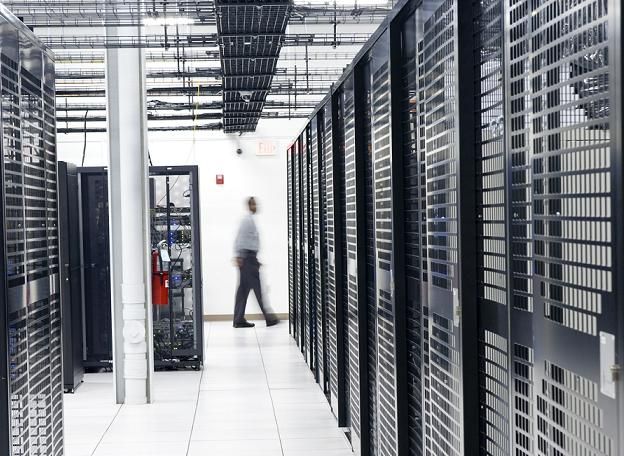
Future Trends and Emerging Technologies
The journey toward more efficient data centers is far from over. Several emerging trends are poised to shape the future of data center technology:
Quantum Computing
While still in its infancy, quantum computing promises to revolutionize data processing capabilities. Data centers of the future may integrate quantum systems to solve complex computational problems that are currently intractable using classical computers.
Sustainable and Self-Sufficient Facilities
The convergence of renewable energy, advanced cooling techniques, and automation is paving the way for data centers that operate almost entirely off the grid. These self-sufficient facilities will be capable of harnessing local energy sources and managing their own resources with minimal external input.
Integration of IoT and Big Data
The continued proliferation of IoT devices generates unprecedented volumes of data. Future data centers will need to integrate sophisticated big data analytics tools to handle these massive datasets, ensuring that insights are derived efficiently and effectively.
Continued Emphasis on Cybersecurity
As data centers become more advanced, the complexity of cyber threats increases. Future innovations will likely incorporate even more robust security measures, including AI-driven threat detection and blockchain-based data integrity systems, to safeguard critical infrastructure.
Overcoming Challenges
Despite significant technological advancements, the journey toward greater efficiency is not without its challenges. Data center operators must address several key issues to fully realize the benefits of modern innovations:
A. High Initial Investment:
Transitioning to advanced cooling systems, renewable energy, and automation technologies often requires substantial upfront capital.
B. Complex Integration:
Integrating new technologies with legacy systems can be a daunting task, requiring meticulous planning and skilled expertise.
C. Regulatory Compliance:
Operators must navigate a complex web of environmental and operational regulations that vary by region, adding layers of complexity to the deployment of new solutions.
D. Skill Gaps:
As technology evolves, there is a growing need for professionals who are adept in the latest systems and techniques, making workforce training and development a critical component of future success.
Addressing these challenges requires collaboration between industry stakeholders, technological innovators, and regulatory bodies to foster an environment conducive to ongoing improvement and adaptation.
Conclusion
The relentless pursuit of efficiency in data center operations is ushering in a new era of technological innovation. From advanced cooling systems and renewable energy integration to sophisticated automation and AI-driven analytics, data centers are transforming into dynamic, self-optimizing ecosystems. These innovations not only drive down operational costs and improve performance but also contribute to a more sustainable future for our digital infrastructure.
As businesses and consumers alike continue to demand faster, more reliable, and more environmentally friendly services, data center operators must remain at the forefront of technological advancements. The evolution of data centers is a testament to human ingenuity and the unyielding quest for progress—a journey that will continue to shape the future of global connectivity and digital transformation.
In summary, the innovations discussed in this article represent a convergence of technology, sustainability, and economic efficiency. As the digital landscape evolves, the ability to adapt and innovate will determine which data centers thrive in an increasingly competitive environment. The integration of advanced cooling techniques, energy management systems, automation, and edge computing is setting the stage for a future where data centers not only meet the demands of today but also pave the way for the breakthroughs of tomorrow.
With continued investment in research, collaboration across industries, and a steadfast commitment to environmental stewardship, the data center of the future will be a model of efficiency, resilience, and sustainability. This transformation is not just about keeping pace with technological change—it is about redefining the very framework of digital infrastructure to support a more connected, efficient, and sustainable world.
As we look ahead, the promise of further innovation in data center technology is both exciting and essential. The ongoing advancements will ensure that data centers remain at the heart of our digital lives, driving progress and enabling the myriad digital services that define modern society.

